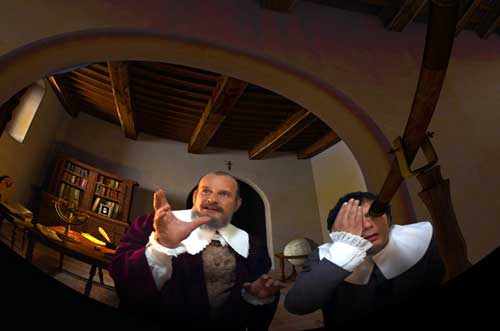On 4 February, the Teide Observatory Tenerife Asteroid Survey (TOTAS) team was credited with discovering comet P/2014 C1, named ‘TOTAS’ (there’s a report today in the main ESA website).
If you’re not an astronomer, you may have the perception that such discoveries are made by intrepid star gazers, huddled around lovingly hand-crafted telescopes in the middle of a freezing winter night, a la Galileo.
Well, technology has advanced quite a lot in 400 years! The post below was contributed by Matthias Busch, of the ESA-supported TOTAS amateur team, and he explains how the find was actually made.
Rafal Reszelewski (from Poland) didn’t find the comet on the images, he was just the lucky one to get the small preview images of the ‘mover’ that my TOTAS evaluation
software found automatically. It’s correct to say that he confirmed it and detected the cometary nature. Seconds later, another team member would have confirmed that one!
The comet was actually discovered by my computer here under my desk!
Our human-volunteer TOTAS clickers review all the ‘movers’ found by the software and either confirm or reject them. That task can’t be done by software – but the software can combine the single detections and extract the moving objects.
The process works as follows: small preview images and an animated gif of those moving objects that were automatically found by the TOTAS evaluation software are uploaded to a website for human inspection. Later, I additionally upload the complete images – and the second task for the TOTAS team begins. They ‘blink’ these images (some people work even late into the night or early in the morning) and create ‘manual movers’ from those asteroids that the automatic procedure missed.
So the output of measured asteroids is really good – for example, our TOTAS team sent astrometry of 1,600 asteroids to the Minor Planet Center during the last run (comprising five search regions – 1 hour each – in two nights).
The sky survey region planning software (which generates the input files for ESA’s Optical Ground Station in Tenerife), the image evaluation pipeline, the database and the collaboration website have all been developed by me during the last 10 years or so, and adapted to the OGS telescope.
Here you see the page of the comet ‘mover’ with the generated preview images: https://vmo.estec.esa.int/totas/mover.php?id=220640
Regards,
– Matthias


Discussion: no comments